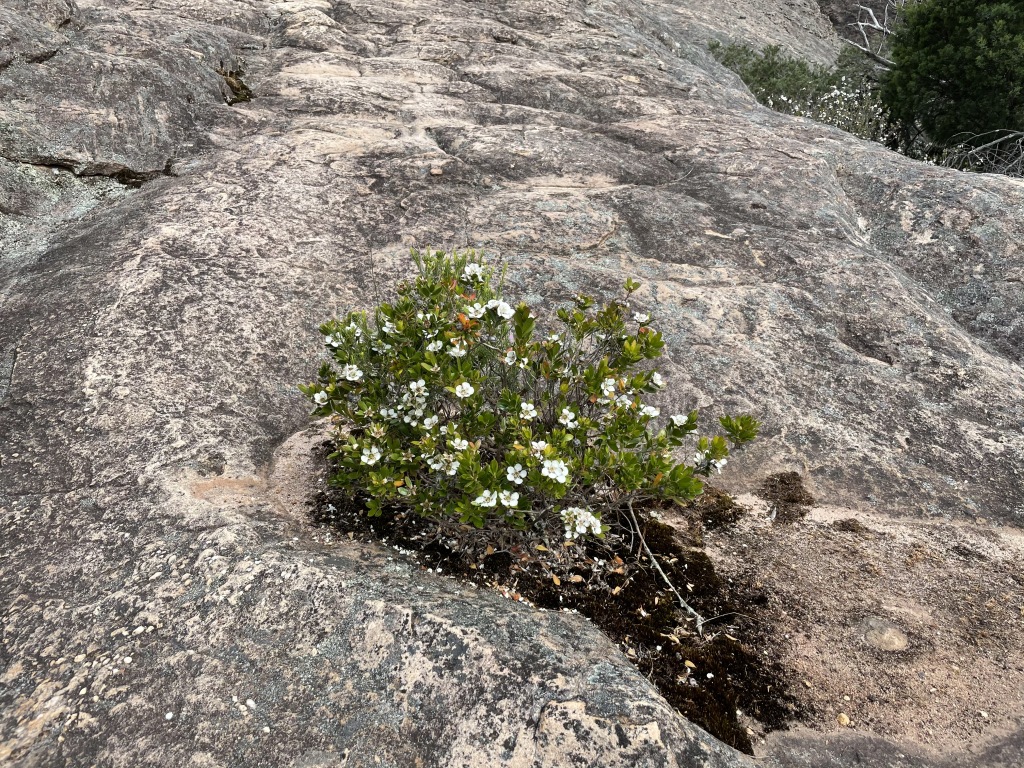Leptospermum turbinatum
Joy Thomps. Shiny Tea-treeShrub to 3 m high; bark on smaller stems smooth or becoming rough. Leaves elliptic to narrowly obovate, 10–25 mm long, 3–8 mm wide, flat, finally glabrous (rarely a few appressed silky hairs persisting); apex shortly acuminate to acuminate, flat to incurved; petiole 1–2 mm long. Flowers c. 25 mm diam.; hypanthium c. 5 mm long, silky to villous, sessile; sepals narrowly triangular, 4.5–6.5 mm long, acute, silky on outer surface, persisting on fruit; petals 8–10 mm long, white; ovary 5-locular, apex glabrous. Fruit persistent, obconical, 7–12 mm diam., surface ultimately shedding in papery flakes (and becoming gnarled), valves woody; seeds 3–3.5 mm long, with a linear-striate surface pattern. Flowers Oct.–Dec.
Wim, GleP, VVP, OtP, Gold, CVU, GGr, DunT, HNF. Victorian endemic. Confined to the Grampians and nearby Mts Langi Ghiran, Buangor and Ben Nevis. Locally common on sandstone and granitic outcrops.
Leptospermum turbinatum has previously been confused with L. nitidum a Tasmanian endemic. Leptospermum turbinatum is the largest-flowered Victorian Leptospermum.
Lyne, A. (1996). Leptospermum. In: Walsh, N.G.; Entwisle, T.J., Flora of Victoria Vol. 3, Dicotyledons Winteraceae to Myrtaceae, pp. 1009–1019. Inkata Press, Melbourne.
 Spinning
Spinning